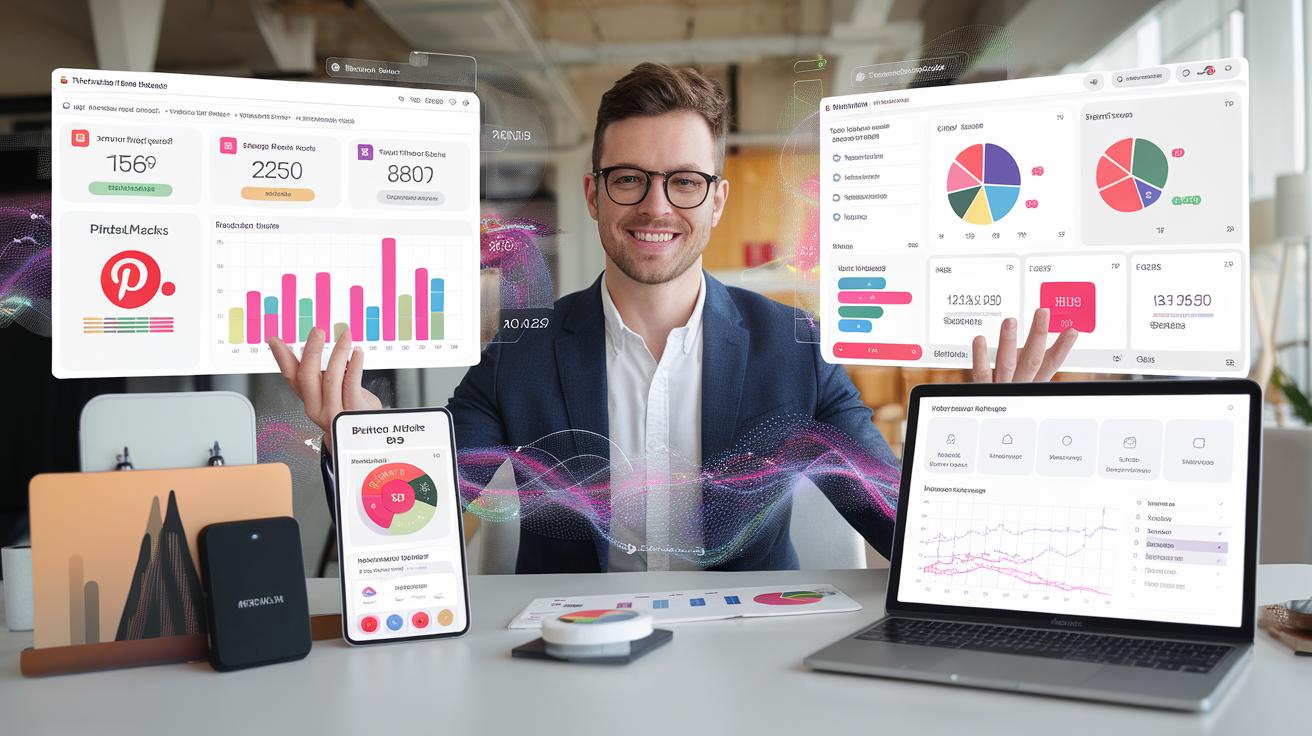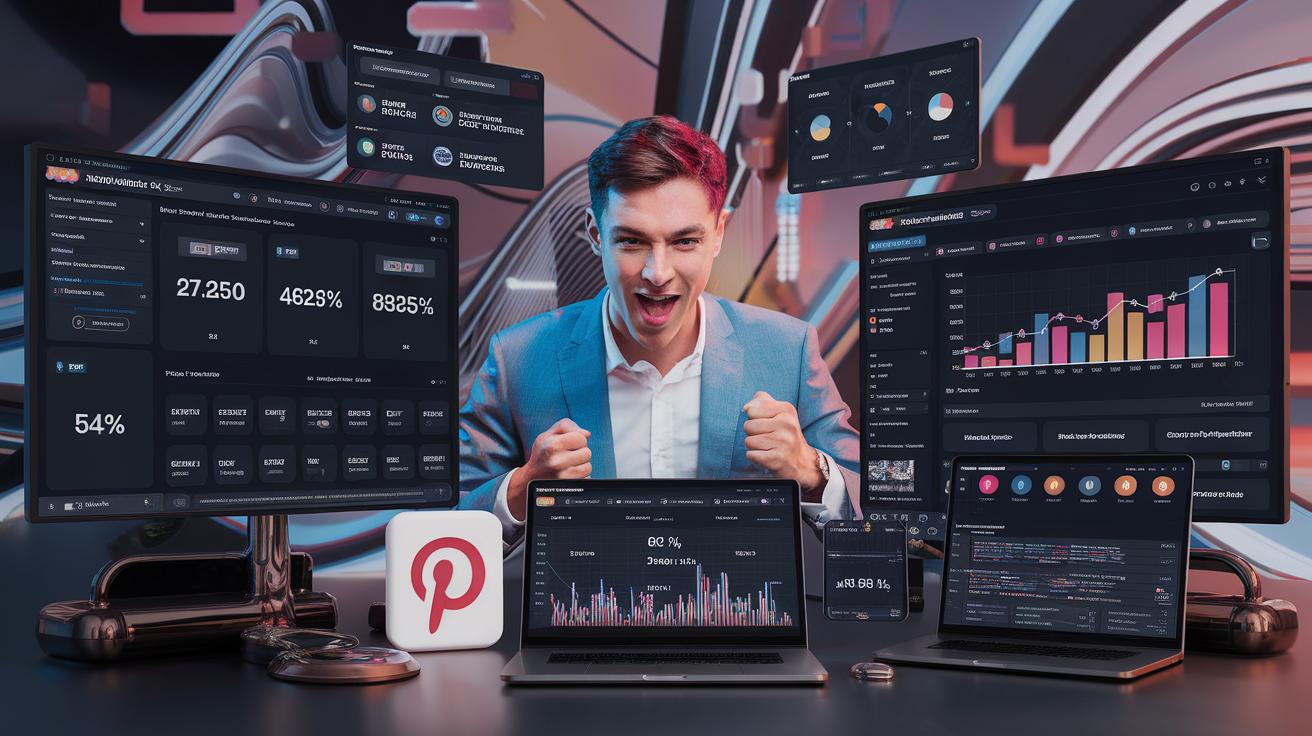Introduction
Visual marketing plays a crucial role in today’s digital marketing landscape. It encapsulates the examination of how images, videos, and other visual elements impact customer engagement and brand perception. Platforms like Pinterest thrive on visual content, making it essential for brands to utilize effective visual marketing techniques to amplify their presence. This article explores the intricacies of visual marketing, focusing on how businesses can leverage these strategies specifically for enhancing their marketing efforts on Pinterest.
Pinterest, known for its visually-driven platform, offers unique opportunities for marketers to connect with their target audience through captivating imagery. As users typically browse Pinterest to find inspiration, effective visual marketing can enhance user experience, facilitate recall, and ultimately drive conversions. By applying proven techniques derived from visual marketing principles, brands can create meaningful content that resonates with their audience, leading to increased engagement and loyalty. This discussion will unveil essential strategies tailored to executing successful Pinterest marketing campaigns.
Understanding Visual Marketing The Strategic Tool for Engaging Customers
Visual marketing has transformed the way businesses connect with their audiences by leveraging images, videos, and graphics to convey messages effectively. Rooted in human psychology, visual marketing capitalizes on our innate ability to process and understand images faster than text. This technique has gained momentum over the years, significantly shaping marketing strategies across various platforms. The history of visual marketing dates back to the earliest advertisements, where striking visuals were used to capture consumer interest. Over time, advancements in technology facilitated the integration of more complex visual elements, making it an indispensable tool in branding and marketing communications.
One of the core principles of visual marketing is its alignment with cognitive perception laws. For instance, the Gestalt principles of perception explain how people naturally organize visual elements into groups or unified wholes. Factors like proximity, similarity, and closure influence how audiences perceive images and can significantly impact brand recognition. Marketers harness these principles to create compelling visual narratives that resonate with viewers, fostering emotional connections and driving engagement.
Understanding the psychology of colors also plays a crucial role in visual marketing. Different colors evoke distinct emotions and associations; for example, red can stimulate urgency, while blue tends to create a sense of trust and reliability. By thoughtfully integrating color psychology into visual content, brands can influence consumer behavior and enhance their messaging effectiveness.
Visual marketing techniques that amplify Pinterest marketing impact involve understanding how users interact with visual content. High-quality images, infographics, and videos can increase engagement rates significantly. Additionally, consistency in branding across visual assets aids in building brand identity and recall, vital components in capturing attention on a visually-driven platform like Pinterest.
Engaging visuals, when combined with well-structured pins and boards, can create a cohesive experience that encourages repinning and increased traffic to the associated content. The strategic arrangement of visuals, adhering to best practices like harmonious color schemes, engaging fonts, and impactful imagery, results in a far more favorable user interaction. Overall, visual marketing stands as a pivotal strategy, facilitating a deeper connection with potential customers through memorable and engaging content.
The Rise of Pinterest as a Visual Platform
Pinterest emerged in 2010 as a platform that fundamentally shifted the way users interact with content online. From its inception, Pinterest offered a unique interface that prioritized visuals over text, allowing users to curate their interests visually through “pins” that link back to the original sources. This shift toward a primarily visual experience capitalized on the growing trend of visual communication, marking Pinterest as a leader in the realm of social media marketing.
The platform’s structure encourages users to discover ideas and inspiration through images, infographics, and videos. Each user creates boards that serve as collections of pins that reflect their interests, hobbies, or projects, forming a digital scrapbook of sorts. This unique blend of social networking and visual discovery has made Pinterest distinct from its competitors, allowing it to secure its place as a prominent player in visual marketing.
Pinterest’s design fosters an environment where visuals are the centerpiece. The grid-like layout allows for a seamless flow of images, making it easy for users to browse. This emphasis on imagery resonates well with cognitive psychology principles, where visual content is often processed faster and more effectively than text. Consequently, brands have recognized Pinterest’s potential as a powerful marketing tool, using the platform to showcase products and ideas in a visually appealing manner.
As Pinterest evolved, it introduced innovative features such as Rich Pins, which provide additional context and information directly on the pin, making it easier for users to engage with the content. Additionally, the introduction of video pins and Story Pins expanded the dynamic capabilities of the platform, allowing brands to tell more engaging stories through carefully crafted visuals. This trend towards enhanced visual content further solidified Pinterest as a vital platform for marketers seeking to make a lasting impact.
The sheer volume of users—over 400 million monthly active users as of the latest data—combined with its unique visual-centric structure, has created abundant opportunities for brands. Companies aiming to leverage Pinterest for marketing can harness these visual strategies to enhance their engagement levels and connect more profoundly with their target audiences. By tapping into the essence of what makes Pinterest successful, marketers can create tailored campaigns that drive both traffic and conversions, fully utilizing the platform’s potential.
Creating Engaging Visual Content Best Practices for Pinterest Marketing
Understanding Visual Content for Pinterest Engagement
To harness the full potential of Pinterest as a visual marketing platform, creating engaging visual content is essential. Here, we will explore effective strategies to develop compelling pins that not only capture attention but also inspire user interaction. Unlike traditional social media platforms, Pinterest emphasizes a distinctive visual-centric approach that requires marketers to be specifically adept at crafting eye-catching images.
Best Practices for Developing Effective Pins
When it comes to creating pins that resonate, certain best practices can enhance their impact:
- Image Quality: High-resolution images serve as the foundation of successful pins. Blurry or pixelated visuals can deter users from clicking on your content. Invest in quality photography or graphic design tools to ensure your images stand out.
- Vertical Orientation: Pins are primarily viewed on mobile devices, making vertical images the optimal choice. A ratio of 2:3 or 1:2.1 generally works best, as this format naturally fits the scrolling behavior of users.
- Color Schemes: Vibrant and contrasting colors are more likely to capture the viewer’s eye. By using a cohesive color palette that aligns with your brand identity, you can ensure recognition and attractiveness.
- Text Overlay: Incorporating concise, impactful text over your images can convey your message quickly. Use bold fonts and clear messaging, but avoid overcrowding the visual to maintain aesthetic appeal.
- Rich Pins: Utilize Rich Pins that automatically sync information from your website. These pins provide additional context and make your content more compelling by integrating pricing, availability, and product details directly into the pin.
- Pin Descriptions: Craft descriptive text that accompanies your visuals. Ensure keywords are woven into your descriptions to optimize for search within Pinterest, thus enhancing discoverability.
After creating visual content, it’s crucial to monitor its performance through Pinterest Analytics, which can offer insights about what types of visuals perform best. Understanding the engagement metrics will allow marketers to refine their strategies and ensure that their pinning efforts remain effective and aligned with audience preferences.
By focusing on these visual marketing techniques, you can create engaging content tailored for Pinterest, fostering an interactive and visually stimulating environment that encourages users to engage with your brand.
Utilizing Pinterest Tools for Visual Marketing
Enhancing Your Visual Strategy with Pinterest Tools
Pinterest offers a suite of tools specifically designed to assist marketers in optimizing their visual strategies, making it an invaluable resource for effective engagement. Understanding and utilizing these tools can significantly amplify the impact of your content. Central to this toolkit are features like Pinterest Analytics and Idea Pins, both of which enable deeper insights into audience preferences and content performance.
Pinterest Analytics serves as a powerful dashboard, providing detailed metrics that highlight how your visual content is performing. It offers data on impressions, saves, clicks, and audience demographics. By analyzing these statistics, marketers can identify trends and refine their strategies accordingly. For instance, if a particular visual style or theme generates more engagement, it’s advisable to create similar content in the future. The analytics tool also allows users to track traffic from Pinterest to their websites, helping to gauge the effectiveness of Pinterest as a marketing channel.
Another significant feature is Idea Pins, which enable users to create multi-page video and image content that tells a story or showcases a process. This format enriches the visual marketing strategy by allowing brands to share more in-depth content without relying solely on static images. Idea Pins can enhance narrative engagement and invite users to spend more time with the content, fostering a deeper connection with your brand. Furthermore, this format supports interactive elements like polls and links, encouraging users to engage actively with your content rather than passively viewing it.
Another tool worth considering is the Pinterest Lens, which uses image recognition technology to help users discover related pins based on an image they provide. Marketers can harness this feature to optimize their visual assets for better discoverability, ensuring that their pins reach audiences already interested in related topics. By tailoring your visuals to stay in line with trending keywords, you can make more of an impact and attract potential followers.
Integrating these tools into your Pinterest marketing strategy not only enhances visual appeal but also helps in crafting data-driven approaches, leading to increased engagement. By utilizing Pinterest Analytics to track performance and Idea Pins to enrich storytelling, marketers can ensure that their strategies resonate deeply with their target audiences, achieving a significant boost in visibility and connection. As we transition to strategies for increasing reach and engagement, leveraging these tools will prove vital in maximizing the effectiveness of your visual marketing efforts.
Strategies for Increasing Reach and Engagement on Pinterest
Enhancing Visibility of Visual Content
Effective visual marketing on Pinterest requires more than simply posting appealing images. To truly enhance your marketing impact, employing specific strategies that increase the visibility and engagement of your visual content is essential. Begin by optimizing your images for Pinterest’s unique dimensions. Vertical images with a 2:3 ratio are recommended, as they tend to perform better in terms of engagement. This format ensures that your visuals stand out in users’ feeds, maximizing their chance of being noticed and repinned.
Another strategic approach is to leverage keywords in your image descriptions. Conduct research using Pinterest’s search bar to determine trending keywords within your niche. Incorporate these keywords organically into your descriptions and alt text to improve the discoverability of your pins. Use engaging language and storytelling techniques to provide context about your visuals, encouraging clicks and interactions. Make sure to create captivating pin titles that clearly communicate the content’s value.
Driving Engagement through Interactive Content
Incorporating interactive content can significantly enhance engagement levels on your Pinterest account. Features like Idea Pins allow for storytelling and multi-image experiences that provide a richer interaction. Try utilizing Idea Pins to create visual “how-to” guides, which can draw users in by offering them something valuable and easily shareable. This format not only retains user attention but also encourages users to save your content for future reference, extending its lifespan on Pinterest.
Another effective technique is utilizing video pins, which can convey more information than a static image and capture attention more readily. Optimize these videos for short viewing periods to match Pinterest users’ browsing habits. Use eye-catching thumbnails and clear captions to entice viewers to watch your content to completion. In addition, encourage interaction by posing questions or including polls in your pins, which can spark conversations in the comments section and further increase engagement.
Consistent branding helps build recognition and trust among your audience. Ensure your visuals exhibit a coherent style, color palette, and logo placement to solidify your brand identity. This consistency not only reinforces brand recognition but also creates a professional appearance that can foster user loyalty, ultimately enhancing the reach and effectiveness of your Pinterest marketing strategies.
Measuring Success in Visual Marketing Key Metrics and KPIs for Pinterest Engagement
Understanding Key Performance Indicators
The effectiveness of visual marketing on Pinterest can be quantified through a range of metrics and key performance indicators (KPIs). These measurements provide invaluable insights into the engagement levels and overall success of your visual content, allowing for timely adjustments to improve performance. Tracking these dimensions is essential in optimizing strategies that align with your Pinterest marketing goals.
One of the primary metrics to gauge engagement is repins. This figure indicates how often your content has been shared by others on Pinterest, serving as a direct reflection of how compelling your visuals are to your target audience. A high number of repins suggests that your visuals are resonating well and can lead to increased visibility across the platform.
Another important KPI worth monitoring is impressions, which represents how many times your pins were displayed to users. This metric not only highlights the reach of your content but also helps assess the effectiveness of your image quality and pin descriptions in attracting user attention. A rising trend in impressions can suggest that your content optimization strategies are effective, creating visual allure that prompts user curiosity.
The Role of Click-Through Rate (CTR)
The click-through rate (CTR) serves as a critical measure for understanding how well your visuals convert views into actions. CTR is calculated by dividing the number of clicks your pins receive by the total impressions, revealing your content’s ability to drive traffic to your website or landing page. A high CTR indicates that your pin not only catches the eye but also engages the audience enough to prompt further exploration. This is especially vital for any business leveraging Pinterest for increased web traffic and sales.
Engagement metrics such as comments and likes further enrich the understanding of content performance. Comments can provide qualitative feedback on what resonates with your audience, while likes serve as a straightforward affirmation of appeal. By analyzing these forms of engagement, brands can gain deeper insights into consumer preferences and emotional responses toward their content.
Monitoring audience growth metrics is crucial. Keeping track of followers over time can reveal trends related to the appeal of your visual marketing efforts and overall brand positioning within the Pinterest community. A robust increase in followers often correlates with engaging content that strikes a chord with users, providing a foundation for sustained interaction and loyalty.
Conclusions
Visual marketing is integral to succeeding in a platform like Pinterest, where engaging imagery is vital to capturing user interest. The techniques discussed highlight the importance of creating visually appealing content that resonates with audiences and aligns with brand messaging. Emphasizing the right visual tools can enhance recognition and recall while also aiding in establishing a strong connection with users.
Adopting these visual marketing techniques is essential for any brand aiming to thrive on Pinterest. By focusing on the user experience and leveraging the power of visual storytelling, businesses can foster a loyal following and significantly improve their marketing impact. As Pinterest continues to evolve, integrating innovative visual strategies will remain a key to unlocking its full potential for marketers.
















